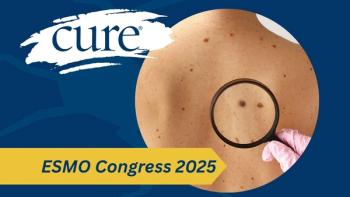
- Fall 2019
- Volume 1
- Issue 1
Too Few Recognize the Dangers of a Common Skin Cancer: Squamous Cell Carcinoma
Cutaneous squamous cell carcinoma, caused by sun exposure or environmental toxins, is usually curable with surgery. Maybe that’s why many don’t realize that, if this cancer goes unchecked and untreated, it can grow, spread and become life-threatening.
Many have heard of melanoma, the deadliest of skin cancers, and understand its dangers. But when it comes to a more common skin can- cer, squamous cell carcinoma, more people are uninformed.
Cutaneous squamous cell carcinoma, caused by sun exposure or environmental toxins, is usually curable with surgery. Maybe that’s why many don’t realize that, if this cancer goes unchecked and untreated, it can grow, spread and become life-threatening.
A Harris Poll in May 2019 revealed that three of four Americans don’t know what this disease is, and 72% aren’t aware that it can spread and become deadly. We shared information about those survey results and what they mean in an
In this fall issue of CURE®, we bring you a feature on cutaneous squamous cell carcinoma and the available treatments for advanced cases that have become aggressive and no longer respond to surgery or radiation. We discuss Libtayo (cemiplimab), an immunotherapy approved by the Food and Drug Administration to treat this disease, and delve into the targeted and other therapies available to treat squa- mous cell carcinoma that has spread to lymph nodes or organs beyond the skin.
We also offer a glimpse of drugs that could become available if research supports their use in the disease: the HPV vaccine for cancers that have the cancer-driving virus living in them and medications that target alterations in the PTCH1 gene.
Elsewhere in these pages, we feature a look at the complex issue of artificial intelligence (AI) and its analysis of big data to improve diagnosis and treatment of patients with cancer. AI has already improved our ability to analyze the results of mammograms and CT scans, and using this kind of machine learning to interpret large amounts of patient data may soon help scientists determine who will most likely benefit from specific drugs.
We also take a close look at the reasons survivors of adolescent and young adult cancers often don’t seek follow-up care, as well as at the trend of cancer coaching and how it might help those affected by the disease.
Throughout this issue, we offer information on a variety of cancer types, including renal cell carcinoma, multiple myeloma and lung, ovarian and breast cancers.
We are also excited to share images from our very first cover contest, which generated a wonderful level of participation. Thanks to all our readers who submitted art about their cancer journeys!
We hope that, within this variety of topics, there is something that will resonate with each of our readers, leaving them better prepared to ask informed questions that may lead to improved care. As always, thank you for reading.
Articles in this issue
about 6 years ago
Hitting the Spot in Squamous Cell Carcinomaabout 6 years ago
As Large As Life: Using Artificial Intelligence in Cancer Careabout 6 years ago
Bonded for Lifeabout 6 years ago
Putting the Ball In Your Court With Cancer Coachesabout 6 years ago
Going to the Dogsabout 6 years ago
Testing for Honestyabout 6 years ago
Grants Offer Caregivers a Day of Restabout 6 years ago
Hiring a Cancer Coach: What You Should Know




